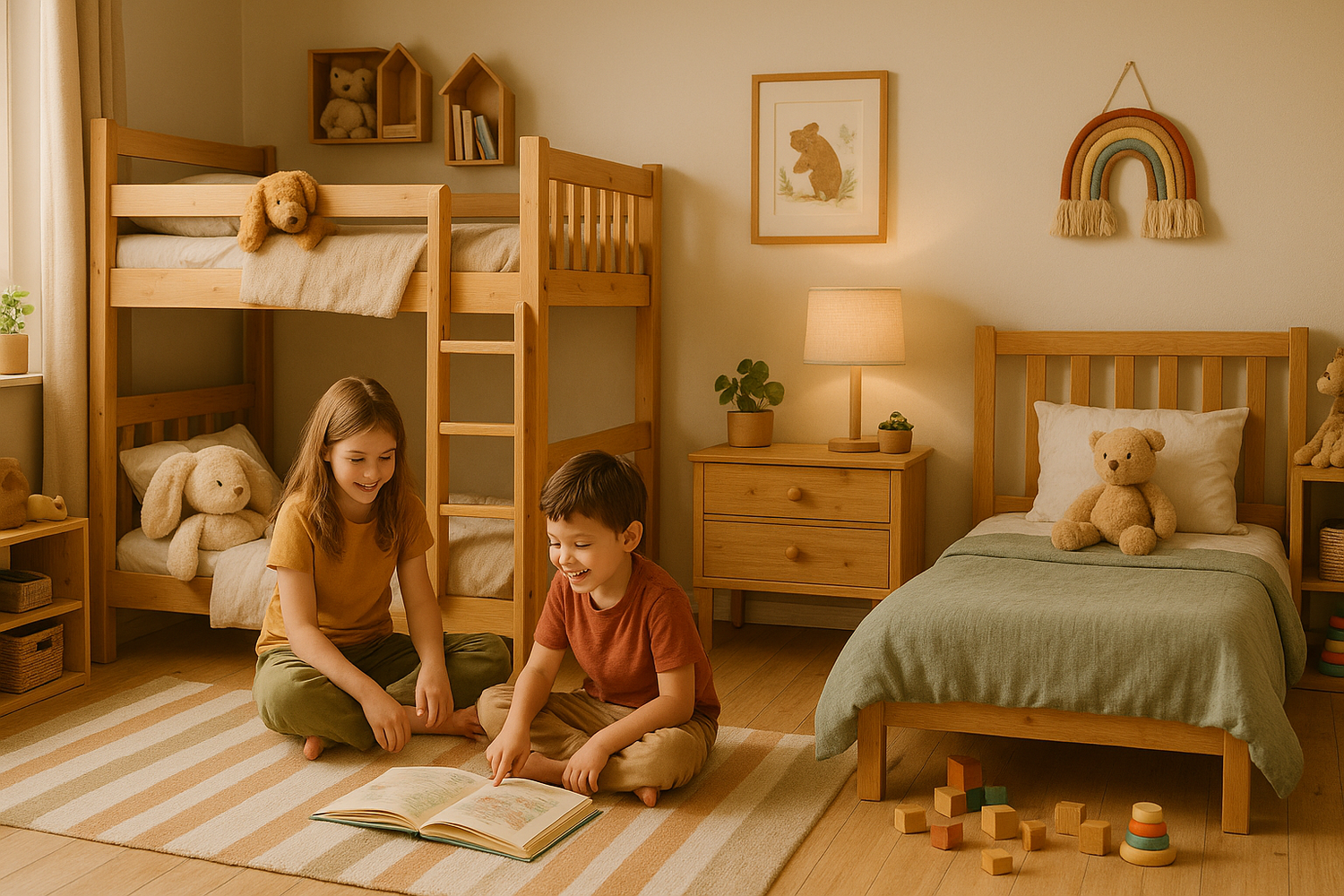Getting a good night’s sleep is important for everyone especially children. While we pay close attention to nutrition and exercise, it’s easy to overlook one critical factor: the mattress your child sleeps on every night. Could your child’s mattress be impacting their posture and growth? Let’s uncover the facts and see how the right choice, like those found at ecokids.net.au, shapes healthy sleep and strong bodies.
Why Posture Matters for Growing Kids
Children’s bones, muscles, and joints are in a state of constant growth and development, making good posture essential during these formative years.
- Proper posture helps support healthy spine and joint alignment.
- Good alignment can improve concentration and reduce fatigue.
- Early habits form the blueprint for lifelong health and comfort.
Poor posture, in contrast, may contribute to back pain, sleep disturbances, and even delays in physical development. Ensuring your child’s spine stays in a healthy position overnight is just as important as how they sit and stand during the day.
Understanding the Connection: Mattresses and Spinal Alignment
Not every mattress is created equal, and the surface children sleep on plays a big role in how their bodies align as they rest.
A mattress that is too soft causes heavy parts of the body like the shoulders and hips to sink too deeply, curving the spine unnaturally. On the other hand, a mattress that is too firm can create pressure points that prevent muscles from relaxing, making good sleep harder.
- The spine should remain in a neutral position while lying down.
- A supportive mattress at the right firmness prevents slouching or arching.
- Children’s lighter body weight means they need mattresses adapted to them, not just adult models in a smaller size.
Paying attention to the quality and design of children’s mattresses, like those at ecokids.net.au, addresses these crucial needs as part of your child’s overall wellbeing.
Signs Your Child’s Mattress May Be Hurting Their Posture
How do you know if your child’s mattress is no longer suitable? There are telltale signs parents should watch for:
- Your child complains about aches, pains, or discomfort on waking.
- You notice slouching, uneven shoulders, or back hunching after sleep.
- Mattress surface is lumpy, sagging, or visibly worn out.
- Child frequently wakes during the night or seems tired despite enough sleep.
- Trouble falling asleep or staying asleep is common.
These indicators suggest it’s time to assess the mattress and consider safer alternatives that better support posture and health.
What Makes a Mattress Posture-Friendly for Children?
Modern research and sleep experts highlight several important mattress features when it comes to protecting children’s posture:
The Right Level of Firmness
- For children, a medium firm mattress is often ideal, firm enough to provide support, soft enough for comfort.
- This helps distribute body weight evenly, keeping the natural “S” curve of the spine.
Materials Matter
- Natural, breathable fibers help regulate temperature and reduce allergens, contributing to restful sleep.
- ecokids.net.au offers mattresses made from certified organic, chemical-free materials.
- Avoid mattresses containing harmful glues, foams, or flame retardants, as these can affect both health and mattress longevity.
Size and Design
- The mattress must fit the bed frame securely—no gaps or overhangs.
- Thickness is important: children’s mattresses should generally be around 15–20 cm thick to ensure proper support as they grow.
- For younger children, a lower mattress height can reduce fall risk and make climbing in and out easier.
The Hidden Risk of Toxic Materials
Many conventional mattresses contain synthetic foams, adhesives, and flame retardant chemicals. Over time, these substances can emit volatile organic compounds (VOCs) and other toxins, negatively impacting respiratory health and possibly interfering with restorative sleep cycles.
Choosing a mattress from ecokids.net.au ensures your child sleeps on safe, hypoallergenic surfaces made of natural and sustainable materials. This reduces exposure to toxins and may also reduce allergy symptoms and skin irritations.
How to Choose the Best Mattress for Your Child’s Posture
Shopping for your child’s next mattress goes beyond picking out a size or color. Here’s how to make a posture conscious decision:
- Test the mattress when possible, press down with your hand to check firmness.
- Ask your child to lie down for a few minutes to gauge initial comfort and support.
- Research materials and look for brands that prioritise organic, non-toxic manufacturing.
- Consider products endorsed or recommended by pediatric health or sleep professionals.
- Look for warranties or trial periods that allow you to test the mattress risk-free.
- Check trusted sources like ecokids.net.au for in-depth guides and information.
A thoughtful, well informed purchase maximizes comfort and supports healthy growth.
Tips for Maintaining Mattress Health
Once you’ve chosen the right mattress, maintaining its integrity is equally important:
- Rotate the mattress every three to six months to prevent uneven wear.
- Use a breathable, washable mattress protector to fend off spills and allergens.
- Keep the mattress free from excess moisture and allow it to air out periodically.
- Inspect regularly for signs of sagging or damage.
These habits extend the life of the mattress and keep it delivering supportive, health-promoting sleep.
The Role of Sleep Positions
While the mattress provides the foundation, your child’s sleep position also influences posture.
- Back sleeping: Promotes natural spinal posture. A pillow under knees can offer extra support.
- Side sleeping: Ensure knees are slightly bent and consider a slim pillow to fill the gap between knees.
- Stomach sleeping: Discouraged for children with posture concerns, as it arches the back and twists the neck.
The right mattress from ecokids.net.au works in harmony with your child’s preferred sleep posture, helping avoid awkward angles and strained muscles.
FAQs
How often should I replace my child’s mattress?
Children’s mattresses typically need replacing every 7–10 years, or sooner if there are visible signs of wear, reduced comfort, or noticeable changes in your child’s sleep quality or posture.
Can posture issues caused by mattresses be reversed?
Many minor posture problems caused by poor mattress support can improve once a better mattress is introduced. However, persistent symptoms should be discussed with your child’s healthcare provider.
Are all organic mattresses posture-friendly?
Organic certification means a product is chemical-free and non-toxic, but not necessarily supportive enough for a growing child. Always check for support, firmness, and overall construction alongside material certifications.
The right mattress can deeply influence your child’s posture, sleep quality, and holistic development. By picking a supportive, natural mattress from ecokids.net.au, you invest in their health and wellbeing every single night. If you’re unsure about your current mattress, now is the perfect time to review your child’s future health will thank you.




